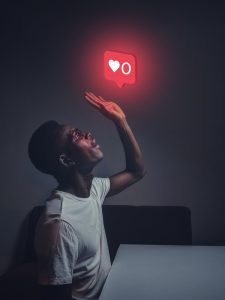Spanish Level 4- Activities Designed for Online Instruction
📵 Spanish Level 4, Activity 03: El bienestar y la tecnología / Wellness and Technology (Online)

Descriptions: In this lab, students will evaluate how social media affects their wellbeing and describe how they feel about certain current events. Students will express personal feelings and opinions regarding literature, social media, and news. Additionally, students will create follow-up questions to have a conversation with others.
NCSSFL-ACTFL World-Readiness Standards:
- Standard 1.1 Students engage in conversations, provide and obtain information, express feelings and emotions, and exchange opinions.
- Standard 1.2 Students understand and interpret spoken and written Spanish on a variety of topics.
- Standard 1.3 Students present information, concepts, and ideas in Spanish to an audience of listeners or readers on a variety of topics.
Idaho Content Standards for World Languages:
- COMM 1.1 – Interact and negotiate meaning (spoken, signed, written conversation) to share information, reactions, feelings, and opinions
- COMM 2.1 – Understand, interpret, and analyze what is heard, read, or viewed on a variety of topics.
- COMM 3.1 – Present information, concepts, and ideas to inform, explain, persuade, and narrate on a variety of topics using appropriate media in the target language.
- COMT 1.2 – Discuss personal preferences in activities and events both within and beyond the classroom.
NCSSFL-ACTFL Can-Do Statements:
- I can discuss technology use and social media in my culture and with others
- I can exchange opinions about the ways we use phones in our personal and school or work lives
- I can exchange preferences, feelings, or opinions and provide basic advice on a variety of familiar and unfamiliar topics
- I can present my reactions to a current event and explain what led to the event being in the news
Materials Needed
Warm Up
Materials Needed for Warm Up
- Begin by introducing the Can-Dos for today’s activity and opening the Google Slideshow.
Vamos a comenzar con los Can-Dos para esta actividad.
- Have students go into breakout rooms and discuss the warm-up questions found on the slideshow.
Ahora, van hablar con sus parejas sobre las preguntas del calentamiento en los breakout rooms.
Main Activity
Materials Needed for Main Activity
- Students will be divided into 3 different groups to debate a hypothetical scenario.
Vamos a dividir en tres grupos para crear un argumento sobre una situación hipotética. - Read the following scenario to your students:
“Francia, como país, ha decidido prohibir los aparatos electrónicos en la escuela primaria. El presidente de Boise State escuchó estas noticias y ahora quiere hacer lo mismo en nuestra universidad. Van a participar en grupo para dar una recomendación al presidente sobre esta nueva idea.” - One group will be the professors, one group will be the students, and one group will be the doctors. Each group will have 7-10 minutes to create their recommendation, which they will present to the group at the end.
Grupo 1 son los profesores, grupo 2 son los estudiantes y grupo 3 son los médicos. Cada grupo va a tener 7-10 minutos para llegar a un acuerdo y crear puntos que pueden usar para defender su opinión. Deben añadir los puntos a Google Slides con la diapositiva que tiene el número de su grupo. - After the groups have made their arguments, one member of the group will have one minute to present their argument. Students will vote on which group had the best argument
Un estudiante de cada grupo va a tener un minuto para presentar su argumento. Después, vamos a votar por el grupo que presentó el mejor argumento. (Usando el chat)
Wrap Up
- Ask students the following discussion question:
- ¿Qué piensan de los beneficios y los problemas de las redes sociales y la tecnología?
End of Lab
- Read Can-Do statements once more and have students evaluate their confidence. (Use thumbs up/thumbs down or download our student cards.)
- Encourage students to be honest in their self-evaluation.
Can-Do Statements:
- I can discuss technology use and social media in my culture and others
- I can exchange opinions about the ways we use phones in our personal and school or work lives
- I can exchange preferences, feelings, or opinions and provide basic advice on a variety of familiar and unfamiliar topics
- I can present my reactions to a current event and explain what led to the event being in the news. Pay attention and try to use feedback for future labs!
Cultural NOtes:
- Que es el Bienestar Digital
- Bienestar Digital TedX
- Emotions in Spanish

